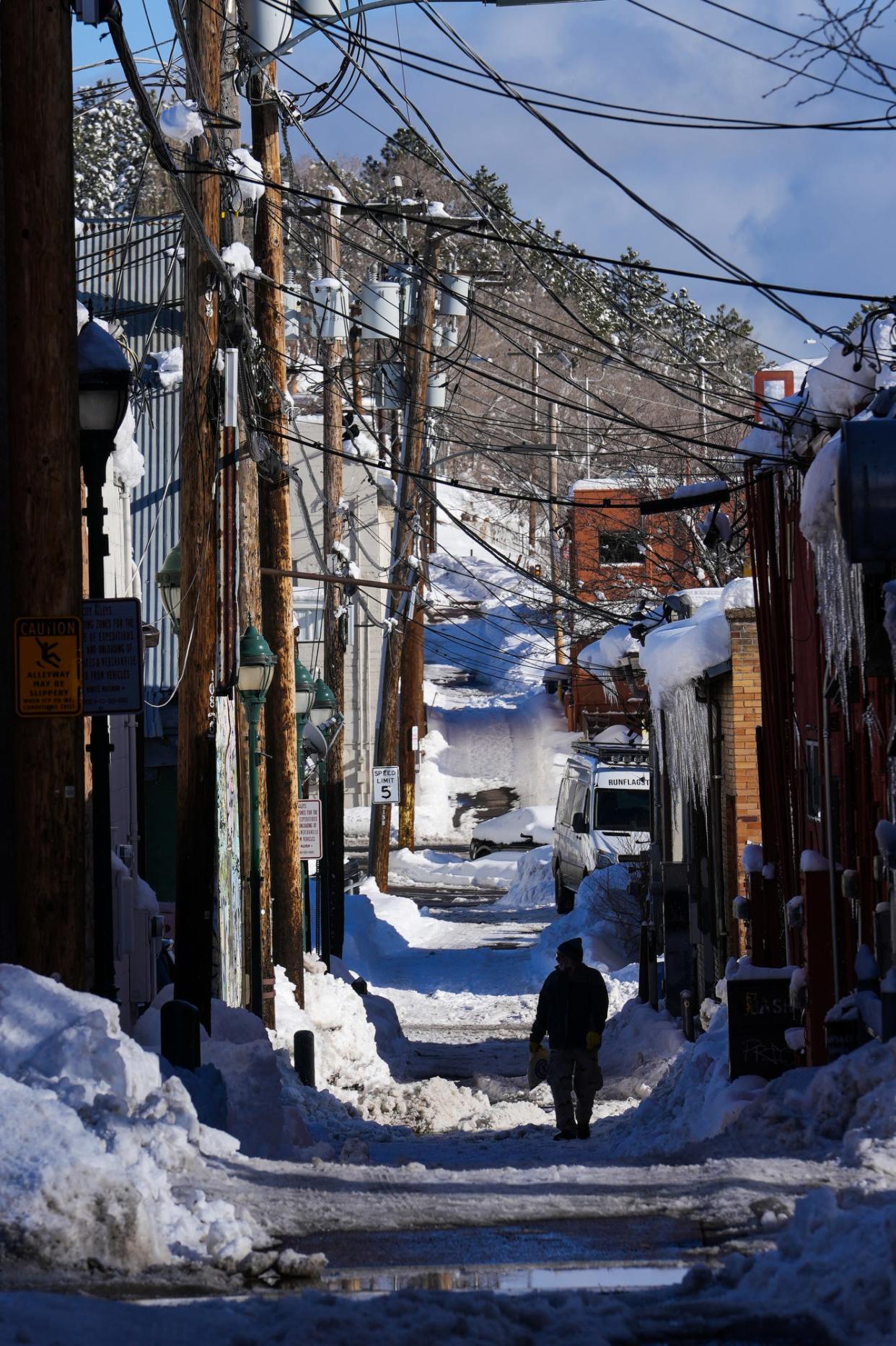Why more water could make fixing the Colorado River even more difficult

Record snowfall has come to Arizona.
It hasn’t even melted yet, and already there’s an extra 100,000 acre-feet of water in Salt River Project’s reservoirs since Jan. 1.
Meanwhile, snowpack across the Colorado River basin is well above normal, and while it’s still too early to know how runoff will shape up, some researchers have begun to raise their expectations for a better year.
So, we can ease up, right?
Maybe we won’t need to stop using nearly as much water this year, as predicted, to keep Lake Mead and Lake Powell on life support?
That’s exactly what some folks are now saying. And that presents an unexpected challenge.
States still haven't come to a deal on cuts
The feds told the seven Colorado River basin states last summer that they needed to stop using at least 2 million acre-feet of water this year. It’s an inordinate amount – enough to submerge the city of Phoenix in 6 feet of water.
Not surprisingly, states have not agreed on a plan to do this. Because conserving this much water requires painful tradeoffs that, so far, no one has been willing to make.
More water woes:Rio Verde Foothills deadline passes with no solution
But state delegates are back at it again, hoping to reach some sort of voluntary deal by the end of this month.
If they can’t agree or if they agree to a plan that saves less than enough water to shore up the lakes, the federal Bureau of Reclamation is studying how it might force states to cough up the rest of what’s needed.
A draft is expected in the spring, after we get a better sense of runoff for the year.
We often kick the can on the Colorado River
Federal modeling tells us that one good winter won’t be enough to stave off the inevitable. Even if we have unexpectedly robust runoff this year and lake levels rise, 40 million Colorado River water users will be right back on the road to “dead pool” because we haven’t solved the fundamental problem:
We’re still using more water than the Colorado River produces.
But how do we ask people to make painful sacrifices when lake levels are rising? Wet years buy us time, and that makes it easy to kick the can – which if we’re honest, is what basin states have been doing for years.
We take just large enough actions to stave off major pain, then act again and again, buying less and less time with each new round of cuts.
Now, to be fair, even if we agree to 2 million acre-feet in cuts, that won’t solve the problem. All that’s projected to do is keep the lakes from dropping lower.
It won’t build them back.
Will we do what's tough if there's more water?
It’s hard to say at this point what a wet winter changes in that calculus – other than it bolsters the perception that maybe we can avoid the hardest stuff for another year or two.
But that’s the problem. States have just a few weeks to negotiate what was already going to be a tough deal.
They don’t know how much water users have already proposed to give up voluntarily, in exchange for funding from the Inflation Reduction Act. Nor do they know how much the lakes could rise from all this as-yet unmelted snow.
But they do know how unpopular potential solutions are – whether it’s asking the Upper Basin states that rely on Lake Powell to agree to 500,000 acre-feet in additional conservation or asking the Lower Basin states that rely on Lake Mead to begin accounting for evaporation and system losses, potentially at 1.5 million acre-feet a year.
It’s like delegates are trying to kick a football through a shifting goalpost. With a bunch of angry fans yelling at them not to score.
Who wants to play that game?
This could be a recipe for inaction
And if states punt again, what will Reclamation do?
The bureau shared an analysis just before the holidays of what might have to happen to save one or both lakes. Essentially, the only real choice would be to send a lot less water past Glen Canyon and Hoover dams – maybe as little as 5 million acre-feet, depending on the year and the scenario. (By comparison, Arizona, California, Nevada and Mexico are still using more than 8 million acre-feet, despite all the cuts we’ve made thus far).
There will be tremendous pressure to ease up if the lakes are rising or the 24-month forecast suggests we don’t need a full 2 million acre-feet this year to keep Lake Powell and Lake Mead on life support.
A wet winter is a good thing, don’t get me wrong.
But presuming strong civic leadership does not emerge to push for collective sacrifice, even in the face of additional water, we’ve got ourselves a recipe for more can-kicking.
Which is the last thing the nation’s two largest reservoirs need now.
Reach Allhands at joanna.allhands@arizonarepublic.com. On Twitter: @joannaallhands.
If you love this content (or love to hate it – hey, I won't judge), why not subscribe to get more?
This article originally appeared on Arizona Republic: Colorado River cuts could get even tougher, thanks to a wet winter

